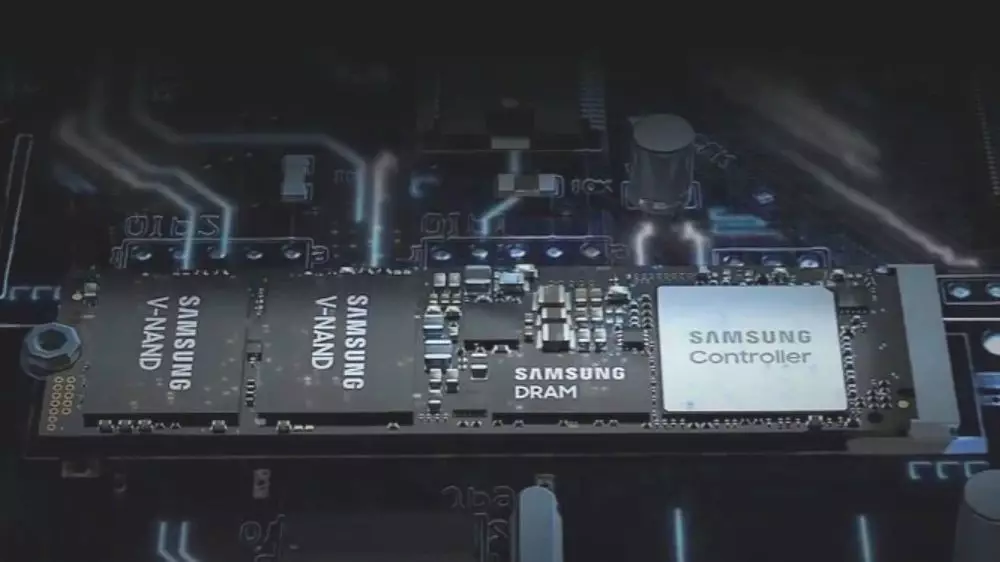The ongoing evolution of Solid State Drive (SSD) technology has ushered in numerous advancements, with the PCI Express (PCIe) interface at the forefront. At this pivotal moment, PCIe 5.0 stands out as the latest contender. While its adoption has yet to permeate the gaming community significantly, recent developments indicate that this trend may soon shift. Samsung’s introduction of the PM9E1 SSD could play a crucial role in changing the landscape by offering unprecedented speeds and efficiency.
Samsung’s PM9E1 boasts staggering promised speeds of up to 14.5 GB/s for sequential reads and 13.5 GB/s for writes. To put these numbers into context, the previous generation of PCIe 4.0 SSDs offered read speeds of about 7 GB/s and write speeds nearing 5.1 GB/s. Such advancements claim to double previous benchmarks. However, even the competition is rising to meet this challenge; for instance, the Crucial T705 matches the blazing read speed of 14.5 GB/s but lags slightly with a 12.7 GB/s write speed. With these specifications, Samsung positions itself strategically as a frontrunner for the title of the fastest consumer SSD on the market.
Interestingly, Samsung’s gaming-focused SSD, the 990 Evo, doesn’t fully harness PCIe 5.0 capabilities. Instead, it operates at a 5.0 2×2 speed, closer to the PCIe 4.0 standard when analyzed for lane configuration. Whereas the PM9E1 promises true PCIe 5.0 bandwidth, indicating a substantial leap in performance for users looking for next-generation storage solutions.
Though the specifications are promising, the PM9E1 appears targeted more towards manufacturers and system integrators than regular consumers. It is likely to find its way into pre-built gaming rigs and workstations where bulk performance is of maximum importance. Samsung is expected to follow this with a more consumer-oriented drive, likely featuring a more eye-catching name and additional marketing.
This manufacturer-focused approach raises important questions about accessibility. Affordability will be key to widespread adoption; should the PM9E1 carry a price tag reflective of its high-end performance, it risks alienating everyday gamers and tech enthusiasts. If PCIe 5.0 SSDs become prohibitively expensive, the revolution may stall before it even begins.
A critical aspect of new SSD technology, especially those operating at significantly high speeds, is thermal management. Current PCIe 5.0 SSDs often struggle with excessive heat, necessitating elaborate cooling solutions. Samsung’s PM9E1, however, reportedly showcases a power efficiency improvement of over 50%, attributed to its novel 5 nm controller. This efficiency holds the promise of making high-speed SSDs viable in smaller form factors, such as laptops and handheld devices.
The very idea of a high-performance drive that remains cool under pressure could route PCIe 5.0 SSDs into more consumer-friendly applications. If Samsung can deliver reliable cooling without active systems, it may signal a seismic shift in how we utilize SSD technology.
Despite the impressive specifications, the current range of PCIe 5.0 drives hasn’t established itself as a necessity for gaming yet. The critical measure of SSDs in gaming is not solely the raw speed in sequential reads and writes but how those speeds translate into real-world applications. Currently, 4K random read and write speeds for PCIe 5.0 scarcely show improvement over their PCIe 4.0 predecessors—an area that critically affects gaming performance and overall user experience.
Looking ahead, there are hopes that improvements in SSD technology will catch up with upcoming platforms. New chipsets from AMD and Intel are poised to unleash the potential of PCIe 5.0 SSDs. As more devices begin to integrate this technology, gamers might find themselves in an environment where faster storage translates into tangible benefits.
Conclusion: The Future of PCIe 5.0 SSDs in Gaming
As we stand at the cusp of widely adopting PCIe 5.0 SSDs, Samsung’s PM9E1 could be the catalyst this technology needs. While we currently find ourselves in a stage where the benefits of PCIe 5.0 for gaming remain unproven, the advancements in speed, efficiency, and potential market availability could make SSDs a game-changer in the near future. As we embrace emerging technologies and new computing paradigms, let’s remain optimistic that these developments will elevate our gaming experiences to new heights.

